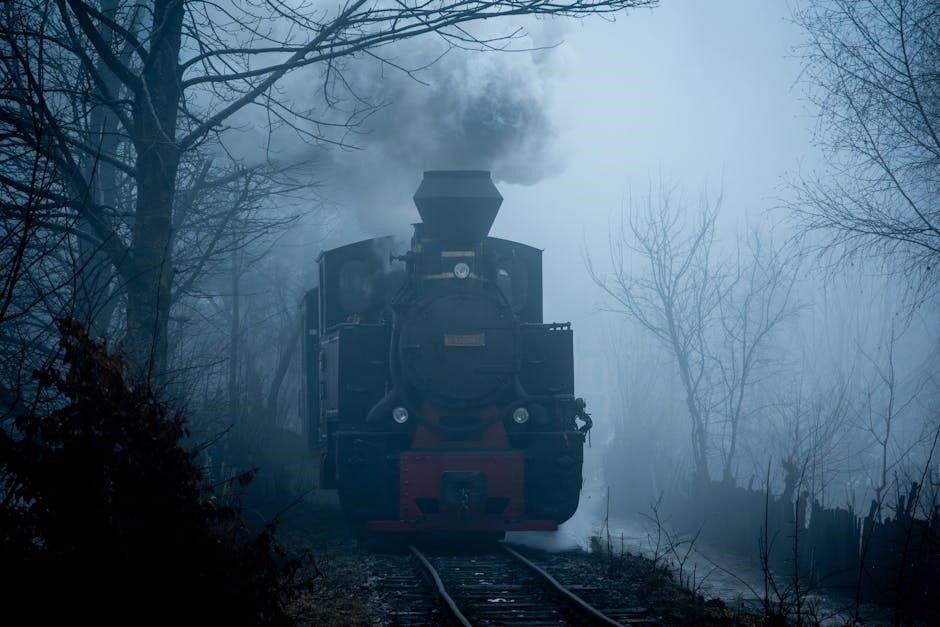The Drama Triangle: A Comprehensive Overview
The Drama Triangle, conceptualized by Stephen Karpman in 1968, is a social model illustrating dysfunctional interactions. It describes how individuals adopt specific roles—Victim, Rescuer, or Persecutor—within conflict situations. Understanding this framework is crucial for recognizing and escaping these unproductive patterns in relationships and various contexts.
The Drama Triangle, a concept developed by Stephen Karpman in 1968, offers a powerful framework for understanding dysfunctional social interactions. It posits that during conflict, individuals often unconsciously assume one of three roles: Victim, Rescuer, or Persecutor. These roles, while seemingly distinct, are interconnected and create a dynamic of unproductive communication and unresolved issues. The triangle is not about assigning blame but rather about recognizing patterns of behavior that perpetuate conflict.
Karpman’s model, rooted in Transactional Analysis, highlights how these roles are often learned early in life and repeated in various relationships, from personal to professional. Understanding the Drama Triangle provides valuable insight into why certain conflicts feel repetitive and difficult to resolve. By identifying the roles being played, individuals can begin to break free from these destructive patterns and move towards healthier, more empowered interactions. Recognizing the dynamics at play is the first step toward fostering more constructive communication and achieving positive resolutions.

Understanding the Roles in the Drama Triangle
The Drama Triangle consists of three primary roles: Victim, Rescuer, and Persecutor. Each role represents a distinct pattern of behavior and thinking in conflict situations. Recognizing these roles is essential for breaking free from the triangle’s cycle of dysfunction.
The Victim Role
The Victim in the Drama Triangle often feels powerless, helpless, and oppressed. They tend to blame others or external circumstances for their problems, avoiding taking responsibility for their actions or feelings. Victims may perceive themselves as vulnerable and seek rescue from others, reinforcing their sense of dependency.
They often believe they lack the resources to solve their own problems and may feel overwhelmed by their vulnerability. This can lead to a cycle of seeking validation and assistance from Rescuers, further perpetuating their victimhood. The Victim role is characterized by a discounting of personal power and an external locus of control.
In essence, the Victim feels trapped by their circumstances, believing they have limited options for change. They may actively seek out Persecutors to reinforce their feelings of oppression, creating a self-fulfilling prophecy of helplessness. Shifting out of this role requires recognizing personal agency and developing problem-solving skills.
The Rescuer Role
The Rescuer in the Drama Triangle is driven by a need to help others, often intervening in situations where they are not needed or wanted. They derive a sense of self-worth from saving others, often neglecting their own needs and well-being in the process. Rescuers frequently offer help unasked for, working hard to fix problems for others.
This behavior can stem from a desire to feel needed or to avoid confronting their own issues. Rescuers may provide monetary resources or other forms of support, even when it enables negative behaviors in the Victim. Their actions, though seemingly benevolent, can perpetuate the Victim’s dependency and prevent them from taking responsibility.
To escape the Rescuer role, it’s crucial to focus on personal well-being first and recognize that true help empowers others to solve their own problems. This involves setting boundaries and encouraging self-sufficiency rather than enabling dependence. It’s about shifting from saving to supporting.
The Persecutor Role
The Persecutor in the Drama Triangle is characterized by controlling, blaming, and critical behavior. They often feel justified in their actions, believing they are upholding standards or correcting wrongdoing. However, their methods are typically harsh and destructive, contributing to a cycle of negativity and conflict.
Persecutors are often unaware of their own power and may discount it, leading them to use it negatively. They seek to maintain a position of dominance, often at the expense of others. This role can stem from feeling powerless or insecure, projecting those feelings onto others through aggression and criticism.
Individuals in the Persecutor role may find it difficult to empathize with others or acknowledge their own vulnerabilities. To break free from this pattern, it’s essential to develop self-awareness, recognize the impact of their behavior, and learn healthier communication strategies. Shifting towards understanding and compassion is key.
Real-Life Examples of the Drama Triangle
The Drama Triangle manifests in numerous everyday scenarios. Consider a workplace where a manager (Persecutor) constantly criticizes an employee (Victim). A colleague (Rescuer) steps in to offer help, often unasked for, reinforcing the Victim’s dependence and the Persecutor’s control. This creates a cycle where the initial problem is never truly resolved.
In romantic relationships, one partner might play the Victim, constantly complaining about their problems. The other partner acts as the Rescuer, trying to fix everything, while secretly resenting the burden. Eventually, the Rescuer may become the Persecutor, blaming the Victim for their unhappiness, and the cycle continues.
Family dynamics can also illustrate the Drama Triangle. A parent (Persecutor) might be overly critical of a child (Victim), while another parent (Rescuer) tries to shield the child, creating a dysfunctional dynamic that prevents the child from developing resilience and independence. Recognizing these patterns is the first step toward healthier interactions.

The Drama Triangle and Relationships
The Drama Triangle significantly impacts relationships, fostering unproductive communication and conflict. Recognizing the roles within the triangle—Victim, Rescuer, and Persecutor—is crucial for breaking free from these patterns and building healthier, more supportive connections with others.
Romantic Relationships
In romantic relationships, the Drama Triangle can manifest intensely, creating cycles of conflict and dissatisfaction. Partners may unconsciously assume roles of Victim, Rescuer, or Persecutor, leading to unhealthy dynamics. For example, one partner might consistently play the Victim, feeling helpless and blaming the other for their problems.
This can trigger the other partner to become the Rescuer, constantly trying to fix things and alleviate the Victim’s suffering. Over time, resentment can build as the Rescuer feels overburdened and the Victim remains dependent. Alternatively, one partner might adopt the role of the Persecutor, criticizing and controlling the other, leading to feelings of oppression and resentment.
Recognizing these patterns is the first step toward breaking free. Couples can benefit from open communication, jointly working toward healthier dynamics and understanding each other’s needs. Breaking the cycle can lead to deeper understanding and supportive romantic relationships.
Business Context
The Drama Triangle’s impact extends beyond personal relationships and into the business world, where it can significantly hinder productivity and create a toxic work environment. In this setting, the Victim might be an employee who feels overwhelmed and blames management for their lack of resources or opportunities.
A colleague or manager could then step into the Rescuer role, constantly covering for the Victim’s shortcomings and taking on extra work. This can lead to burnout for the Rescuer and perpetuate the Victim’s sense of helplessness. Alternatively, a Persecutor might emerge as a manager who micromanages and criticizes their team, fostering a climate of fear and stifling creativity.
Recognizing and addressing these dynamics is crucial for effective leadership and team cohesion. Shifting away from these roles involves promoting open communication, empowering employees to take ownership of their work, and fostering a supportive environment where constructive feedback is valued. This leads to a more productive and positive work environment.

Escaping the Drama Triangle
Escaping the Drama Triangle involves conscious effort and self-awareness. Recognizing patterns, understanding your role, and shifting to more empowered positions are essential steps. Challenging, coaching, and creating offer alternative responses, fostering healthier interactions and relationships.
Recognizing Patterns
The initial step toward escaping the Drama Triangle involves cultivating awareness of your own behaviors and emotional responses within conflict situations. Pay close attention to how you typically react when disagreements arise, noting whether you tend to assume the role of Victim, Rescuer, or Persecutor. Do you frequently feel powerless, blaming others for your problems? Perhaps you instinctively offer unsolicited help, feeling responsible for others’ well-being. Or, you might find yourself criticizing and controlling those around you.
Examine your interactions with others, identifying recurring dynamics. Are there specific individuals or situations that consistently trigger these patterns? Understanding the triggers and recognizing the roles you and others play is vital. By observing these patterns, you can begin to detach yourself from the automatic responses that perpetuate the Drama Triangle. Remember, acknowledging the pattern is the first step to breaking free and fostering healthier communication.
Reflect on past conflicts and identify instances where you might have fallen into one of the roles. What were the circumstances? How did you feel? What was the outcome? This introspection can provide valuable insights into your tendencies and vulnerabilities within the Drama Triangle dynamic.
Shifting to Empowered Roles (Challenger, Coach, Creator)
Moving beyond the Drama Triangle necessitates consciously adopting empowered roles that promote healthy interactions. Instead of the Victim role, embrace the role of the Creator. Creators take responsibility for their actions, focusing on solutions and proactive steps to change their situation. Rather than feeling helpless, they harness their inner resources and seek constructive resolutions.
Transform the Rescuer role into that of a Coach. Coaches empower others to find their own solutions, asking questions that resource them to work it out for themselves. They offer support and guidance without enabling dependence or taking on others’ burdens. The focus shifts from fixing others to facilitating their growth and self-sufficiency.
Finally, replace the Persecutor role with that of a Challenger. Challengers provide honest feedback and hold others accountable, but with respect and empathy. They address issues directly and constructively, fostering growth rather than resorting to blame or criticism. By embodying these empowered roles, individuals can break free from the destructive patterns of the Drama Triangle and cultivate healthier, more fulfilling relationships.

Resources for Further Learning
To deepen your understanding of the Drama Triangle and strategies for escaping its cycle, numerous resources are available. Consider exploring the works of Stephen Karpman, who originally developed the model, for foundational insights. Transactional Analysis literature, stemming from Eric Berne’s theories, offers valuable context.
The Conscious Leadership Group (CLG) website provides accessible interpretations and practical tools for applying the Drama Triangle concept. Their videos and articles offer guidance on shifting to empowered roles like Creator, Coach, and Challenger. Additionally, online platforms such as LinkedIn and various counseling websites offer articles and discussions on the Drama Triangle in relationships and business contexts.
For a more structured approach, consider consulting with a therapist or counselor trained in Transactional Analysis or related modalities. They can provide personalized guidance and support in recognizing your patterns within the Drama Triangle and developing strategies for healthier interactions. Remember, numerous free resources are also available online and in libraries to aid in your journey.